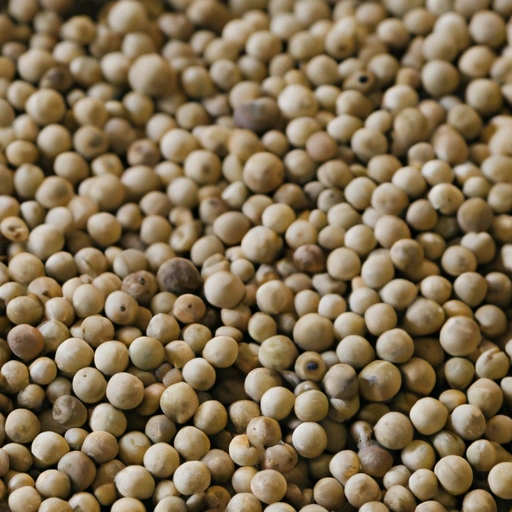White Pepper
Description

White pepper, derived from the Piper nigrum plant, is the ripe seed of the pepper plant with the outer skin removed. It has a milder, more delicate flavor than black pepper and is often used in light-colored dishes where specks of black pepper would be visually unappealing. As a versatile spice, it's used in various cuisines around the world to add both heat and depth to dishes.
Common uses
In cooking, white pepper is used for its subtle yet sharp flavor. It's a common ingredient in spice blends, marinades, rubs, and as a seasoning for meats, seafood, and vegetables. It also finds use in sauces, soups, and white gravies, where its color blends seamlessly with other ingredients.
Nutritional value
Calories
In a 1 teaspoon (2 grams) serving of white pepper, there are approximately 6 calories.
Protein
White pepper contains about 0.2 grams of protein per teaspoon.
Fat
There is a negligible amount of fat in white pepper, with less than 0.1 grams per teaspoon.
Carbohydrates
Each teaspoon of white pepper has about 1.4 grams of carbohydrates.
Vitamins
While not a significant source of vitamins, white pepper does contain small amounts of vitamin K, A, and C.
Minerals
White pepper is a good source of minerals such as manganese, iron, and potassium, contributing to its nutritional value.
Health benefits
White pepper may offer several health benefits, including digestive aid, anti-inflammatory properties, and potential contributions to weight loss. Moreover, its mineral content supports various bodily functions.
Potential risks
Excessive consumption of white pepper could lead to gastrointestinal irritation or respiratory issues in some individuals. As with any spice, it should be used in moderation.
Common recipes
White pepper is widely used in recipes like white sauces, mashed potatoes, cream soups, and Swedish meatballs. It's also integral in Chinese, Thai, and Vietnamese dishes.
Cooking methods
This spice can be added during cooking or sprinkled on after serving. It's suitable for simmering, sautéing, and other cooking methods where its flavor can infuse into the dish.
Pairing with other ingredients
White pepper pairs well with dairy-based dishes, eggs, poultry, and seafood. It complements ginger, cardamom, and coriander in spice blends.
Summary
White pepper is a globally cherished spice that adds a distinct yet subtle heat to dishes without altering their color. Whether incorporated into classic European recipes or enhancing the flavors in Asian cuisines, it is a versatile ingredient that has stood the test of time in culinary history. With its array of health benefits and wide use in cooking, white pepper is a must-have in any kitchen.